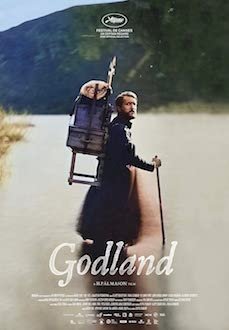Direction: Hlynur Pálmason
Country: Iceland
With Godland, Icelandic Hlynur Pálmason (A White, White Day, 2019) signs a sensory piece of cinema that bears some similarities with Ingmar Bergman and Carl Dreyer, not so much in the visuals but rather in the topic, severity of the mood, and depiction - both physical and emotional - of the main character. However, the sharp square-framed images recalling the photographic process known as daguerreotype and a masterful direction make Godland feel like an unexplored land in cinema.
Elliott Crosset Hove is Lucas, a Lutheran Danish priest who is sent to Iceland with the mission of building a church and photographing the population. The Nordic island was under the Danish crown rule in the late 19th century, when the story is set, and the clash of temperaments, habits and language is pretty evident. Taking the longest route in order to photograph the scenic views, Lucas feels the callousness of Ragnar (Ingvar Eggert Sigurðsson), a somber Icelandic guide, right from the start.
Not only his body succumb to the harsh environment but do does his mind. It’s gradual but conclusive. The deeper he sinks into this unforgiving landscape, the more he falls into temptation and sin.
Godland is filled with sensations that come from the physical world and from the soul. You’ll feel the poetic, sometimes magical realism on one side, and the fear, transgression and fatality on the other. This rare reflection on the colonization of the Far North deserves visibility.


